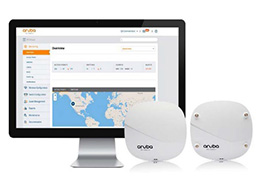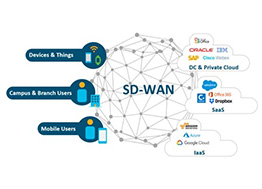
A router is a switching device for networks, which can route network packets, based on their addresses, to other networks or devices. Among other things, they are used for Internet access, for coupling networks or for connecting branch offices to a central office via VPN (Virtual Private Network). Depending on the type they communicate using the various access protocols, such as Ethernet, ATM or DSL. In the OSI layer model, the switching of data packets through the router is based on the address on the network layer (layer 3). In addition to routers that use Internet protocol (IP), there are multi-protocol routers, which also handle other network protocols.

An access point is a device that creates a wireless local area network, or WLAN, usually in an office or large building. An access point connects to a wired router, switch, or hub via an Ethernet cable, and projects a Wi-Fi signal to a designated area. Wi-Fi technology has improved greatly in recent years, but it’s not one-size-fits-all, especially when it comes to businesses. Large office spaces with heavy traffic typically utilize Wi-Fi access points, while small offices with limited users are more likely to have Wi-Fi routers and range extenders. Let’s take a look at how their features compare to find the best Wi-Fi solution for you.

A Software-defined Wide Area Network (SD-WAN) is a virtual WAN architecture that allows enterprises to leverage any combination of transport services – including MPLS, LTE and broadband internet services – to securely connect users to applications. An SD-WAN uses a centralized control function to securely and intelligently direct traffic across the WAN. This increases application performance and delivers a high-quality user experience, resulting in increased business productivity, agility, and reduced costs for IT.

A switch is a device in a computer network that connects other devices together. Multiple data cables are plugged into a switch to enable communication between different networked devices. Switches manage the flow of data across a network by transmitting a received network packet only to the one or more devices for which the packet is intended. Each networked device connected to a switch can be identified by its network address, allowing the switch to direct the flow of traffic maximizing the security and efficiency of the network. A switch is more intelligent than an Ethernet hub, which simply retransmits packets out of every port of the hub except the port on which the packet was received, unable to distinguish different recipients, and achieving an overall lower network efficiency.